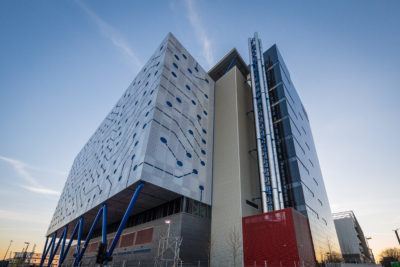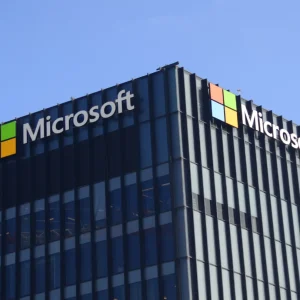
Telehouse Europe’s new North Two data centre site in London, has been unveiled as the world’s first 11-storey multi-floor cooling facility.
The new site, which cost £135 million, is to deliver clients 24,000 sq.m of gross area located within the company’s existing Docklands campus.
This therefore brings Telehouse’s London holdings to over 73,000 sq.m connected to over 530 carries through its two meet-me rooms.
Michelle Reid, Marketing Director of Telehouse, said the new site would be one of the greenest and most connected data centres in the world.
Its Power Usage Effectiveness (PUE) will be 1.16 due to the evaporative cooling fitted into six-storey’s of the site. The site also offers a total of 73MW of power, it includes an on-campus 50MW power substation at 132KV.
Paul Sharp, building manager, Telehouse said: “Building a six-storey adiabatic data centre was not easy, you have to segregate the cool air coming in and ensure you get the hot air away.”
The site currently contains hot aisles at around 38 degrees Celsius, while a minimal flow of air at 25 degrees Celsius is spread through the room.
During the tour of the site, Sharp added: “This building is like a giant PC box, with fans at one side and processors in the middle.”
The company said the architecture of the new facility was specifically designed to meet the increasing customer demand for connectivity, both in terms of software platforms that can be assessed and through the number of business partners that can be reached via resilient, secure, low-latency links.
Network customers increasingly demand that data centre infrastructure supports access to a diverse range of services through proximity and access to a wide range of potential enterprise customers, leading internet exchanges, ISP’s and cloud service providers, said Telehouse.
A paper on the hyper connected economy published by Telehouse, identified a vibrant data centre sector as underpinning the shift to digital saying it is only through the continued investment in modern, efficient data centre infrastructure that the hyper-connected economy will reach its full potential.
From a data centre perspective, what is required is a collaborative environment where all the media and platforms are interconnected, which is crucial to ensure speed of delivery, consistency and quality of experience, which provides the infrastructure for consumers to interact with brands. With end users consuming more video content and cloud applications, mobile providers such as O2 and Vodafone are increasingly using the data centre ecosystem to connect to a plethora of internet exchanges, international networks and national ISP’s to reach as many people as possible.






